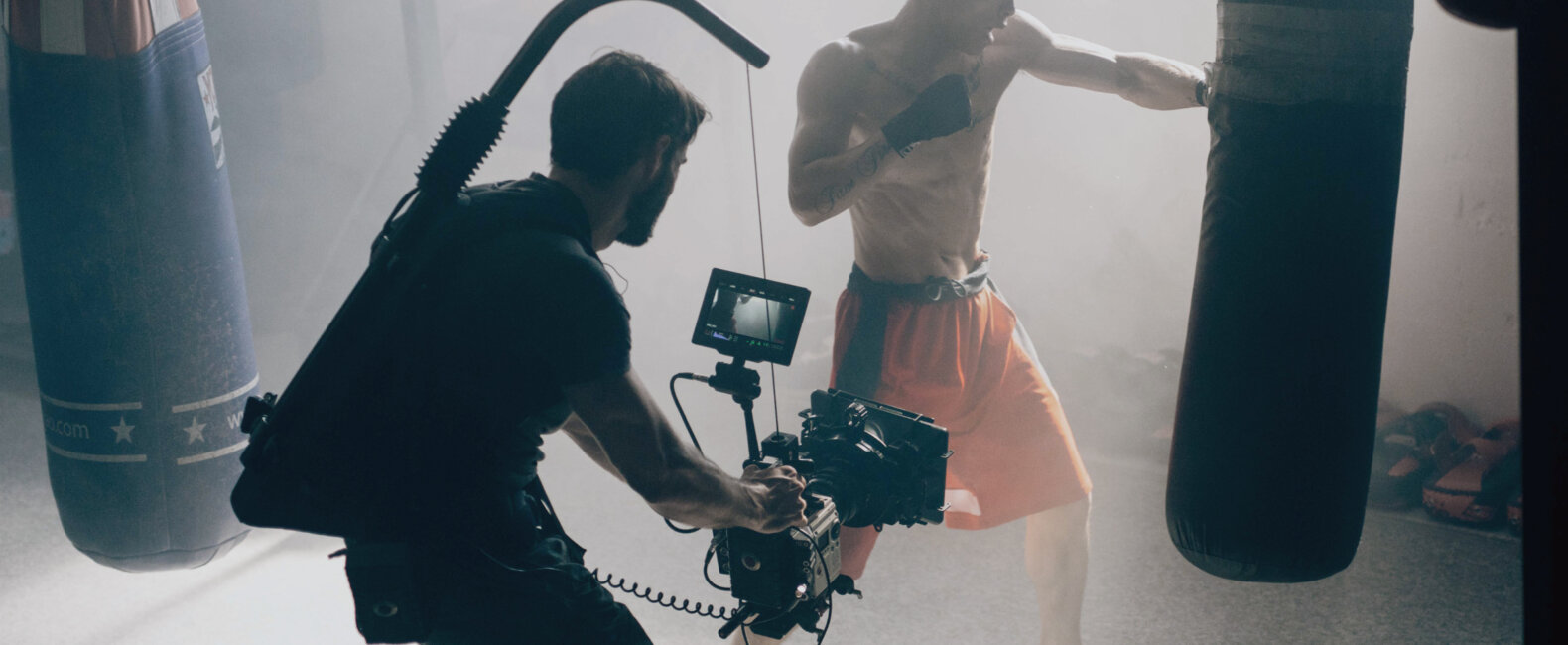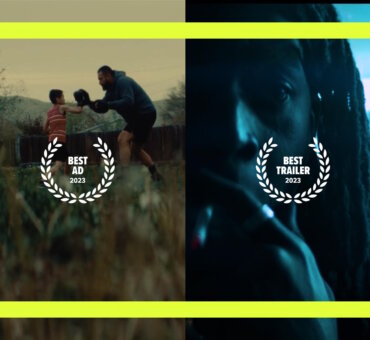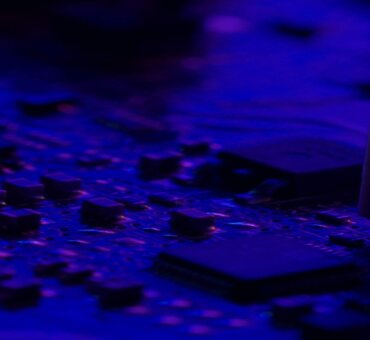Jonny Mass and Edward Khoma of Abandon Visuals believe that someday enough will be enough. Someday the resolution of digital cameras will reach a state of perfection. But while we might not be there yet, we are well on our way. And with RED’s latest innovation, the 8K HELIUM S35 sensor, we’ve never been closer. To test the HELIUM’s real-world capabilities, RED lent their one-and-only prototype to Jonny and Edward, and tasked them with putting it through its paces on a real-world short film. The result, The Underdog, is not only a beautiful boxing vignette, but also ⎯ frame by frame ⎯ a breathtaking example of the possibilities of 8K.
“It’s just out of this world,” Jonny told us. And after seeing the footage, we agree. We’re excited to have it available on Filmsupply, and we’re thrilled to be the first company to offer licensable 8K footage.
We recently spoke with Jonny and Edward about their film, the possibilities of 8K, and why they believe it’s important for filmmakers to keep up with the latest technology.
Filmsupply: What’s it like working in 8K?
Jonny Mass: As soon as we booted up the camera, we were like, “Holy shit.” I’d never seen detail like that before. When we did the shots with the kid, you can see the reflection of the trophies in his eyes. You can see the gloves hanging from the boxing ring. You could blow it all up 1000 percent, and it would still look extraordinarily sharp. It’s hard to explain. It’s just out of this world.
Maybe the thing that surprised me the most was how well it works in low light. We did one scene outside where the main character is pounding his gloves against his head and walking in circles. We switched the camera to 2,000 ISO, and we were like, “No, this can’t be real life.” It was totally clean. There are people posting tests now at 3,200 ISO, and it’s still perfectly clean. The day and age of not going past 800 ISO on a dragon are gone. This is different territory.
There has been a vast improvement in dynamic range as well. I believe it’s got half a stop more over the Dragon sensor. There’s no clipping whatsoever. It’s such a well-balanced image. It would take a lot to mess up the image.
Jared Fadel the DP on this project said “The features on this camera would make any DP cry of happiness.”
Is it a big jump, going from 5K to 6K up to 8K?
The difference between 5K and 8K is unbelievable. Having an 8K camera is really what it takes to deliver in 4K. Now that 4K is finally in peoples home’s shooting in 5K or 6K, to deliver in 4k, is going to be less favorable with 8K available. It’s a large jump in terms of resolution, but data storage is there and the workflow is easy.
What was the workflow like?
Edward Khoma: It was really easy. Just because it’s 8K doesn’t mean it’s a much different workflow. The proxies were pretty much the same. I’d create lower res versions and work off that. Then I’d connect to the high res in the end.
How many Ks do we need until it’s finally enough?
Edward: I don’t think it’s going to stop until it’s fully IMAX quality. I don’t know if you can even measure it because it’s film, but IMAX is probably over 10K. It’s going to make jobs like makeup artist more difficult, I think. Actors aren’t going to like the way their faces look. But I don’t think the quality is going to keep improving forever. There’s going to be a point where it’s perfect.
Jonny: I don’t think we’ll stop until we reach the resolution of the human eye. With this new camera, however, the focus should really be on the new color science, dynamic range, and low light performance as well. It’s a vast improvement over every other camera currently on the market.
Edward: Another big factor is that hard drives are getting cheaper, so storage isn’t an issue. This project was over 2 terabytes. And with the 8K proxy and final, it was about 4 terabytes. Which is just one hard drive.
Why shoot on 8K when most viewers will watch on their laptops or phones?
Jonny: I think it’s a gigantic misconception that you need a 4K monitor to see the difference you get with 4K footage. Or an 8K monitor to see 8K. It’s going to look amazing even if you’re watching it on a 1080 monitor. All the detail is still there. Most theaters don’t even have 4K projectors, but you can still see all the detail, all the amazing light. In the end, what we’re talking about is more detail.
How important is it for filmmakers to keep up with the latest tech?
Jonny: I’d say the technology is there, and it’s not hard to use. There are no excuses for not being able to work with this camera. Edward, Jared, and I put this entire project together in two days. Some of these older, accredited DPs are worried about new technology interrupting their workflow, but that’s just not the case.
Edward: People can’t be afraid to move forward.
Jonny: It’s all about innovation. I saw a Facebook post by Christopher Probst the other day that summed it up. His RED rep asked if he wanted to purchase an extended warranty plan and Christopher said “No! I’m changing camera tech every year as it should be!”That’s the key — innovation. It drives everything we do here at Filmsupply, including our decision to bring this incredible 8K footage in our catalog.
To license 8K footage from The Underdog, go here.






